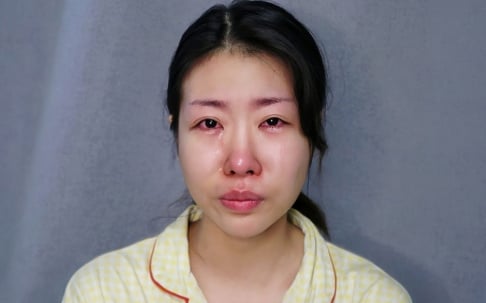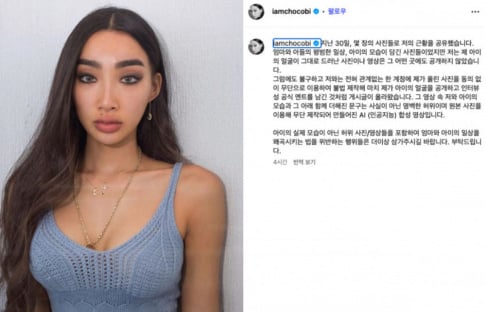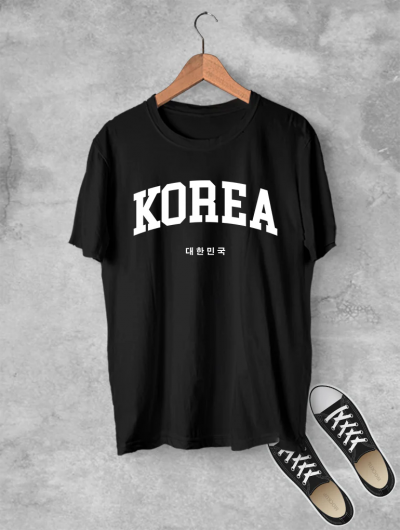A keloid is a sign of a wound being healed by surgery, a tattoo, and a keloid develops quickly depending on the location and pigmentation of each person. Some only form normal scars, others form keloids and, more importantly, hypertrophic scars lead to loss of skin aesthetics.
What is a keloid?

What is a keloid? Causes and effective treatment
Keloids often appear when lesions on your skin are not completely treated. The keloid scars usually form shiny red-pink masses, sometimes with visible internal blood vessels.
True to the name keloid scars develop far beyond normal skin, when touched, hard as a rubber ball. Keloids do not affect health but have a fast spreading rate and cause loss of aesthetics.
Causes of keloid scars:
After you are injured, the cells try to repair and reconstruct the damaged area by forming a scar.
Depending on the type of injury to the different skin that leads to different scars such as:
- Puncture wound
- Surgical scars
- Severe acne
- Chicken pot
- Pierced at
- Tattooed
Some cases when the wound is closed mouth and entering the period of eating young skin, you "load" the body with "taboo" foods such as:
- Spinach
- seafood
- Egg
Causes ulcer wounds and the possibility of keloid formation is even higher.
Apart from the aforementioned causes, keloid formation can be a "prediction" for foreign objects to exist on the skin or unsuccessful cosmetic surgery.
Keloids can occur anywhere on the body and are common in young people under the age of 30, with dark skin color, with factors that prolong the healing process.
There are several areas of the skin that are at high risk of developing keloid scars after trauma such as
- Earlobe area
- Helix
- Beard area on face
- Thoracic region in front of breastbone
- The skin on the delta of the arm
- Upper back region
In contrast, the skin of the palms and soles of the feet hardly saw keloids.
Symptoms of keloid scars:
The keloid scar develops and develops very slowly. It usually takes 3 months to a year for you to see the first signs of a keloid.
After that time it may take several weeks or months for the keloid to develop.
At first the keloid scar is usually pink, red or purple depending on the location and the wound on which the keloid emerges. A keloid scars often rise above the flat surface of the skin. The color of keloid scars usually darkens over time, and it is often darker than normal human skin.
Some keloids may be soft and powdery, but some are hard and elastic like rubber.
Keloids often cause itchy pain, while keloid scars are in the process of developing, which can lead to itching and scratching when touched. But these symptoms usually stop when the keloid stops growing.
Keloid scars can form anywhere on the body. The most common areas of keloids to appear are: the area on the neck, chest, shoulders, ears and back. A keloid may be smaller or larger than 10 inches.
How to prevent keloids:
- For minor wounds: should be clean with sodium chloride, after the wound is dry, apply turmeric to the wound to avoid scarring.
- With open wounds, loss of skin: need to keep the wound open and clean, then use gauze to bandage the wound. You should see a doctor for advice.
- After surgery: You should eat turmeric or apply turmeric directly to the wound, do not eat spinach and seafood.
- Burns: First soak in ice water, then soak in the wound to cool and then treated at the hospital. If the wound is mild, use fresh turmeric powder to treat it.
- Atopic scars: If you want to repair scars, consider carefully because the new scar may be larger than the original scar.
How is keloid scars diagnosed?
Creams or oils often help prevent wounds from drying out, while also protecting the skin so that it doesn't get rubbed. There are many types of scar creams on the market, patients should consult a doctor to use properly and effectively.
Doctors can diagnose keloids by looking at your skin, sometimes you can biopsy your skin to rule out other types of skin growth.
Can keloids be prevented or avoided?
For those who are at risk for keloids, they may decide not to have their ears pierced or injected or tattooed. If you do the above will lead to keloid formation.
How to treat long-term keloid scars
In order to treat new keloids or long-term keloid scars, we should determine our location and choose the appropriate treatment, to bring the best results.
But most experts or dermatologists recommend a combination of two or more treatments so the keloid scar cannot return. The treatment of keloid scars is available in many ways, such as surgical, internal medicine, radiation therapy or using natural materials. Here are the treatments you need to know
Remove keloid scars in health:
Corticosteriod injections and other drugs:
Treating keloids with these corticosteriod injections often helps the keloid shrink. In this way, the patient has to have the next shot after 3 to 4 weeks.
The average person treating keloids with Corticosteriod injection must have 4 or more injections.
The first injection tends to reduce symptoms and soften the keloid scar. And the next injection will help the keloid shrink from 50% to 80%.
However, with the treatment of keloid scars by corticosteriod injection, keloids will regrow after 5 years. Dermatologists usually recommend a combination of many other therapies for good results.
Surgical removal of keloids:
This keloid removal treatment involves using surgical tools to remove the keloid.
However, this keloid treatment is a long-term solution, but be aware that 100% keloid will return after treatment.
To reduce the risk of a keloid returning after a mastectomy, doctors often give patients additional treatment with corticosteriod injections.
This is only a temporary treatment.
Laser keloid treatment:
With laser keloid treatment tips will help reduce the protrusion and fade the keloid color. It is often used in conjunction with other treatments such as corticosteriod injections or pressure earrings.
Use pressure earrings (Pressure Earring):
Pressure earrings are usually used after surgical removal or laser treatment. Because pressure earrings put pressure on the keloid area, it reduces the blood flow and can prevent the keloid from returning.
Almost 90% to 100% of patients use this treatment as directed by their doctor after keloid surgery.
However, the use of pressure earrings can cause difficulties because this device tends to be uncomfortable for users.
For best results, wear it up to 16 hours a day and wear it continuously for 6 to 12 months.
How to treat keloids by radiation:
Receiving radiation therapy after your dermatologist has a keloid removal surgery that can prevent keloids from returning. Patients can start radiation treatment immediately after keloid removal surgery the next day or 1 week later.
Radiation therapy may also be used alone to reduce the size of keloid scars. However, the results tend to be better when using it after keloid removal surgery.
Cryotherapy:
This treatment involves freezing the keloid from the inside out, while saving the skin below the keloid. It is used to reduce the hardness and size of keloid scars.
Usually with cryotherapy cryotherapy is often treated for small keloid scars.
In addition, you can also combine with the treatment of keloid scars using natural ingredients below.
How to effectively treat keloids with natural materials:
Lemon:
Lemons contain a lot of vitamin C, which has antiseptic, high anti-inflammatory properties, stimulates skin cell regeneration.
Therefore, not only the use of whitening, lemon is also used as a raw material in the treatment of this keloid scar.
Tips to remove keloid scars on your face with honey:
Honey provides many essential nutrients to help not leave scars on the face effectively
Because honey contains antibacterial active ingredient and hydrogen peroxide. These two substances work to remove and prevent skin infections.
Honey is not only considered a "beauty elixir" of women, but it is also one of the most effective facial scar removal tips today.
With hundreds of vitamins, essential nutrients for skin, honey helps stimulate new skin cell growth, increase skin resistance.
Tips to remove keloid scars are also extremely simple, you just need to wash your face or skin scarred with warm water. To clean the skin then rub honey on the face and use your hands to massage gently about 30 minutes and finally rinse with clean water is okay. Should do with tips remove scars 1 day 1 offline.
How to treat keloid scars:
Gotu kola not only works to detoxify, cool skin, is a nutritious drink, but also got great skin care effects. So pennywort is like a safe and effective way to treat keloid scars.
In addition, gotu kola also contains many triterpenoids that help strengthen the skin and increase circulation to the skin.
The compounds present in gotu kola will inhibit the overproduction of collagen in scar tissue, enhance antioxidants and promote the growth and regeneration of new skin for your old scars.
With effective treatment of keloid scars with pennywort, it's extremely simple you just crush pennywort. Then use a piece of cloth wrapped with the pennywort and juice when pounding on the scarred skin. Apply 1 time 2 times a day in the morning and evening, apply about 10 to 15 days in a row to see clearer results.
How to treat a keloid scar on a foot with strawberries:
Parsley not only helps to fade dark scars, but also is one of the ways to treat keloid scars. Because ripe strawberries contain salicylic acid, which naturally helps to lighten the skin, fade scars.
With the treatment of a keloid scar with strawberries, it is very simple, just slice the strawberry and rub the keloid scar on the foot. Do this daily to see the earliest results
How to get rid of keloid scars on the face with potatoes:
Ingredients potatoes rich in vitamins and have antibacterial, anti-intensive, inflammatory are many you apply.
Not only does the wound heal quickly, but it also helps the scars to fade away.
Method: take 1 crushed potato, use a paper mask to place on the front and then put the potato mixture on top. Stay still for 20-25 minutes, then wash your face clean. Frequently used to achieve high efficiency.
How to treat long-standing keloid scars with fresh ginger
Fresh ginger in addition to its cooling effect can also help you treat long-term keloid scars effectively. Because ginger contains minerals and vitamins such as Mg, Co, Ca, K, Fe, B vitamins, vitamin C, vitamin E and Carotene.
In particular, fresh ginger does not contain high antioxidant activity, helps prevent the aging process extremely effectively.
With effective treatment of keloid scars by ginger, the method is also simple. You only need to bring ginger peeled, then crushed and put a little water to squeeze water. When the juice from ginger you add 1 tablespoon honey and stir well. Next is applied to the area of keloid scars and light massage, done 2 times a day.
How to make long-lasting keloid scars onions:
Onion is known as Onion in English and is rich in Vitamin C, Potassium, Quercetin and Selenium.
Onions work to kill infectious bacteria that prevent diseases such as sugar infections, cystitis and mules. In addition, the active ingredient Quercetin in onions has a very strong antioxidant effect.
With how to make long-lasting keloid scars onions very easy, you just take the onion peeled martial and pounded or pureed.
Then, apply directly to the keloid area for about 15 minutes and rinse with warm water. It should be done every 2 days until the keloid all over.
Eliminates effective keloids with olive oil:
This is an extremely effective way to lose keloid scars. Olive oil keeps your skin soft and moisturized. With a simple way.
Firstly, you need to clean the keloids clean with warm water, apply a little olive oil on the skin and massage about 30 minutes clockwise slowly. Finally, use a clean cloth to wipe away the olive oil or you can leave it overnight.
How to remove keloids after caesarean section with apple cider vinegar:
Apple cider vinegar is a vinegar that can remove any scars because it contains a natural acid component that helps exfoliate dead skin cells.
In addition, apple cider vinegar helps stimulate the growth of skin cells vigorously and reduces the process of scar formation.
By removing the keloid scar after caesarean section with apple cider vinegar, you just need to put some apple cider vinegar mixed with water, then apply this mixture directly to the keloid skin area.
After 10 to 15 minutes you can rinse with water. Do it once a day, mom.
In addition to the above, you can use topical creams to treat keloids, BuocDieuKy suggests to you some of the following: Dermatix Ultra scar gel, Scarguard Repair Liquid gel, Nacurgo ointment, Hiruscar scar cream and Klirvin

 SHARE
SHARE















































Log in to comment